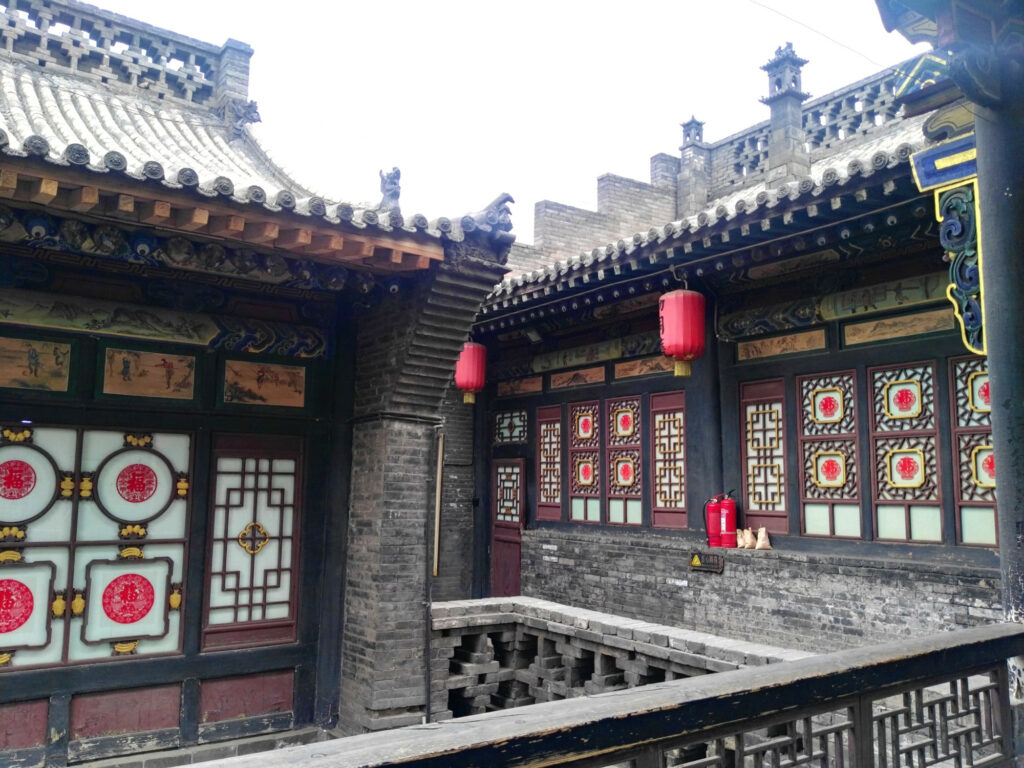It is located in northeast China, some 600km south of Beijing. Its particularity? Its architectural heritage remained intact. Indeed, Pingyang escaped the blind march of progress towards a modernity without much flavor, let’s face it, before the objective of excellence became a priority in China. It’s like before here. The alleys of the old town still line the beautiful traditional houses (siheyuan, open onto a courtyard) and the lighting is still provided by elegant red lanterns. The city has been listed as a UNESCO World Heritage Site since 1997.
A wall of 6 km…
… in the shape of a turtle (a symbol of longevity) encircles the old town centre. Made of bricks and rammed earth, the wall is flanked by 72 towers and 3000 battlements. 3000… with reference to the disciples and pupils who surrounded Confucius. “Doing” the wall is more of a short hike than a bucolic walk. Hence the success of the four watchtowers which offer contemplative tourists an unforgettable panorama: the immense gray wave of the roofs of siheyuan… And among this wave, on West Street, the roof that covered the first bank of China.
Rishengchang House
Organized around three courtyards, this house, which has become a museum, tells the story of a city Merchant. It flourished from 1368, under the Ming, to 1911, thanks to the merchants of Shanxi whose commercial network spread throughout China. At the beginning of the 18th century, exchange offices were opened to facilitate the transport and payment of goods. And soon after the establishment of the Rishengchang office and its branches, paper money replaced the silver bullion which served as currency. Bankruptcy put an end to this gigantic enterprise in 1911.
The temple beyond pure emptiness
Founded in 657, it is the oldest Taoist temple in the province. The Dragon and Tiger Hall with typical Yuan architecture houses two painted statues 5m high. The City Museum deploys in this temple sculptures and steles evoking the 2700 years of the city, but also the memory of the clans that have marked its history. The oldest is that of the Wangs. He was born in the 14th century with Wang Shi, a peasant who successfully converted to trade. Having become very wealthy, the family built a very beautiful architectural ensemble in the 17th century, articulated around thirty courtyards. Maison Wang, 80 km from Pingyano, is open to the public.
The Qiao Clan House
Closer to the city (34 km), it has become eminently touristy thanks to a film “Wives and concubines » made here, behind closed doors, by Zhang Yimou. The director walked his cameras around this miniature city of some 300 rooms and around twenty courtyards in 1992 to the delight of film buffs around the world. Here the parent of the clan is also a modest peasant, Quiao Guifa, who left to make his fortune in Mongolia. His heirs prospered in banking until the Sino-Japanese War and the Communist takeover. The clan house houses admirable pieces of traditional furniture, clothing, embroidered fabrics and beautiful lacquerware.
Return to the medieval wall and Pingyano where the government elite is thinking about a plan organized at its request by the Belgian company NG-lab (since 2008-2011). It is a question of working on town planning and the landscapes along the wall in order to revitalize the culture and the local economy. To be continued, therefore.


